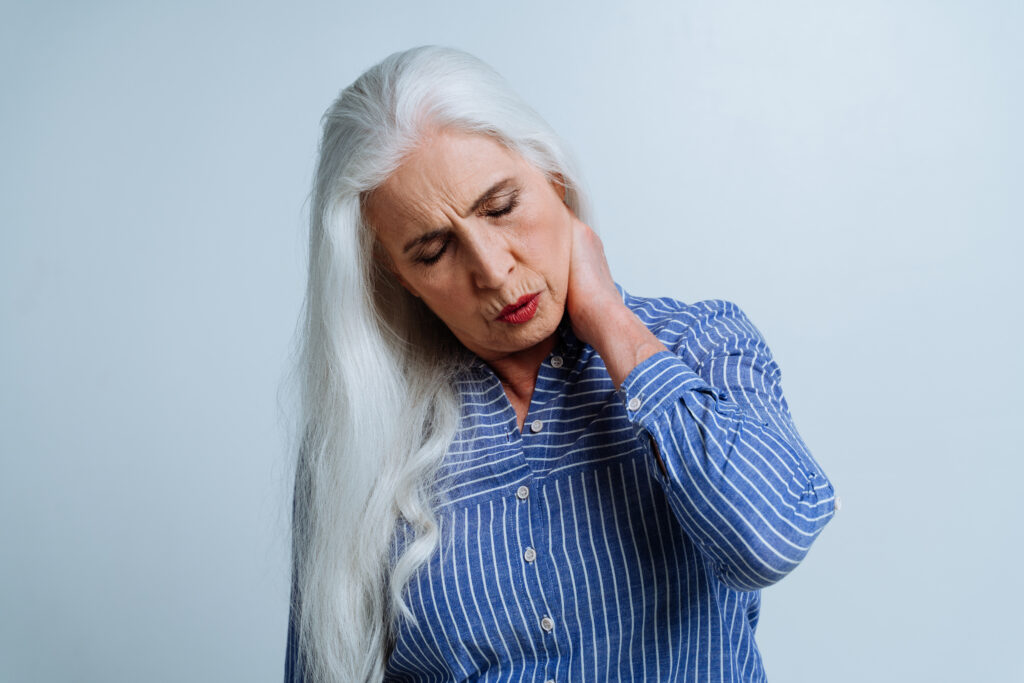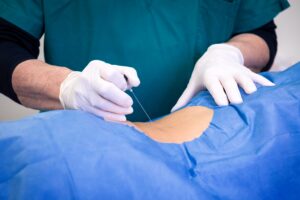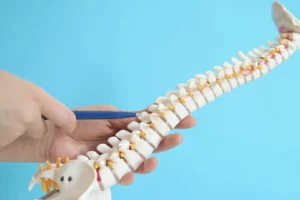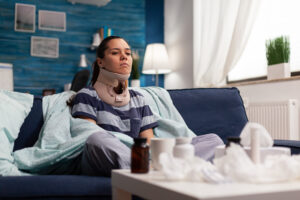Spinal stenosis, a medical condition characterized by the narrowing of spaces within the spine, has become increasingly prevalent in our aging population. This constriction can exert pressure on the spinal cord and the nerves that traverse the spine, leading to a myriad of symptoms that can significantly impact one’s quality of life. At the Institute for Comprehensive Spine Care, we believe that helping patients understand the causes, preventive measures, and available treatments for spinal stenosis is exceedingly important for those affected and their caregivers. Therefore, we will try to provide a comprehensive overview of spinal stenosis and its management.
Understanding the Spine
The spine is a remarkable structure in our body. Made up of vertebrae, discs, and the spinal canal, it safeguards the spinal cord and the nerve roots that branch out from it. These nerves act as vital communication pathways, relaying signals between the brain and the entire body.
Defining Spinal Stenosis
Spinal stenosis is a degenerative condition characterized by the narrowing of the spaces within your spine, exerting pressure on the spinal cord and surrounding nerves. While spinal stenosis can manifest in any part of the spine, it is most commonly observed in the neck, known as cervical stenosis, and the lower back, referred to as lumbar stenosis. The onset of this narrowing is often gradual and can be attributed to various factors, including age-related wear and tear. Depending on the region of the spine affected and the degree of narrowing, the symptoms of spinal stenosis can range from mild discomfort to severe neurological deficits. It’s essential to recognize and address these symptoms early to optimize outcomes and maintain spinal health.
What Causes Spinal Stenosis?
Several factors can contribute to the development of spinal stenosis
Age-Related Changes: With age, the spine undergoes natural wear and tear, and disc degeneration is common. To compensate for this degeneration, the body can form bone spurs or thickened ligaments. Both reduce the space in the spinal canal and as a result put pressure on the nerves, leading to pain in the neck or back region, numbness in your extremities, and muscle weakness in the arms and legs.
Injuries: Spinal injuries, whether from car accidents or falls, can have immediate or long-term repercussions. Such trauma might displace the spine’s structure or initiate degenerative processes that, over time, contribute to the narrowing of the spinal canal.
Genetics: Individuals born with a naturally narrow spinal canal have a congenital predisposition, making them more susceptible to stenosis as they age or if other factors come into play.
Medical Conditions: Certain medical conditions, such as benign or malignant spinal tumors, can occupy space within the spinal canal. Similarly, Paget’s disease, which affects bone remodeling, can alter the spine’s structure, leading to stenosis.
Spinal Instability: Conditions like spondylolisthesis, where one vertebra misaligns over another, can disrupt the natural alignment of the spine. This misalignment can reduce the space within the spinal canal, leading to potential nerve compression.

Recognizing the Symptoms
Spinal stenosis presents itself in a variety of ways, and its symptoms can range from mild to severe. Many individuals report feelings of pain, numbness, or a tingling sensation. These sensations might be concentrated in the back or can spread to the arms or legs. Over time, some people may notice their muscles weakening, especially in the legs, making tasks like walking or climbing stairs more difficult. In more severe instances of spinal stenosis, there can be disruptions in regular bodily functions, leading to issues like loss of bowel or bladder control. It’s essential to be aware of these signs, as early detection can lead to more effective treatment options.
Tips for Prevention
While some of what causes spinal stenosis is unavoidable, there are steps you can take to reduce your risk.
Regular Exercise: Engaging in consistent physical activity is great for spinal health. By focusing on exercises that strengthen the back and core muscles, you not only provide better support to your spine but also reduce the chances of injuries. Additionally, incorporating flexibility exercises, such as stretching routines, ensures that the spine remains less prone to disorders.
Maintain a Healthy Weight: Excess weight, especially around the midsection, exerts additional pressure on the spine. This strain can accelerate wear and tear, heightening the risk of conditions like stenosis. Adopting a balanced diet and regular exercise regimen can mitigate this risk.
Proper Posture: The way we hold ourselves daily, be it while working, lifting objects, or even lounging, has profound implications for our spine. Proper posture ensures that the spine’s natural curves are maintained, reducing undue stress on any particular section. Investing in ergonomic furniture and being mindful of one’s posture can ward off long-term spinal complications.
Regular Check-ups: Proactive healthcare is the cornerstone of well-being. By scheduling regular spinal check-ups, you can stay ahead of potential issues. Medical professionals, like myself, can spot early signs of problems, allowing for timely interventions and treatments, which often result in better outcomes.
Bone Health: Ensuring an adequate intake of essential nutrients like calcium and vitamin D fortifies bone density. Conversely, detrimental habits, such as smoking or excessive alcohol consumption, can compromise bone strength, making them more susceptible to fractures and other conditions.
Treatment Options
If you’re diagnosed with spinal stenosis, there are several treatment avenues available to you.
Non-Surgical Treatments: Physical therapy is a cornerstone of non-surgical treatments, offering tailored exercises that target and rehabilitate affected spinal areas. Beyond physical therapy, a range of medications is available. Pain relievers can address discomfort, while muscle relaxants help ease muscle spasms often associated with spinal conditions. For those with persistent pain, epidural injections, which deliver steroids directly to the inflamed area around the nerves, can offer significant relief and act as a bridge to more long-term solutions.
Surgical Treatments: When non-surgical or conservative treatments don’t yield the desired results, surgical interventions become a consideration. Decompression procedures aim to provide more space for the nerves, reducing the pressure that causes pain. Spinal fusion, on the other hand, seeks to stabilize the spine by fusing two or more vertebrae together, eliminating any motion between them.

Living with Spinal Stenosis? We Can Help.
A diagnosis of spinal stenosis necessitates certain lifestyle adaptations. At the Institute for Comprehensive Spine Care, led by the esteemed Dr. Gbolahan Okubadejo, MD, FAAOS, we are dedicated to guiding patients through every phase of their journey, ensuring optimal spinal health and well-being. It’s crucial to stay informed, maintain a positive mindset, and seek support when needed.
Should spinal stenosis or related concerns weigh on your mind, we urge you to reach out and schedule a consultation at the Institute for Comprehensive Spine Care. We will assess your condition, explore non-surgical options, and determine if surgery is the right choice for you. Trust in the expertise and compassionate care provided by the Institute for Comprehensive Spine Care today.
















